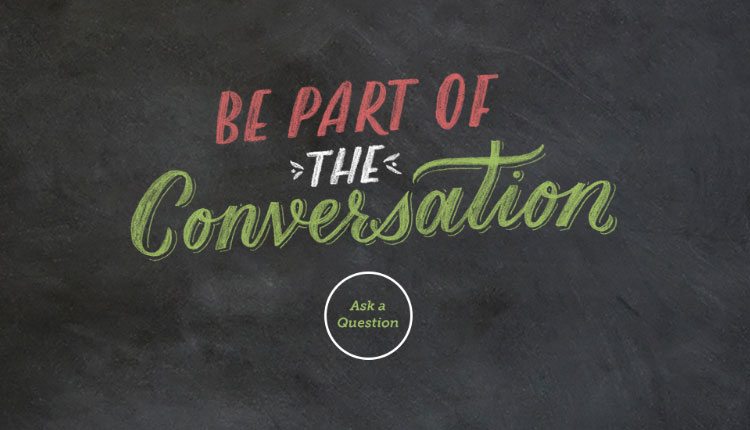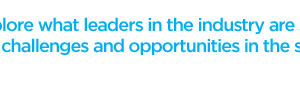As science and those who teach it come under attack by special interest groups, experts say it’s more important than ever to have a concerted, collective approach to communication.
_x000D_
A story is making the rounds in the media involving the first patented strain of genetically modified marijuana, a new product developed by Monsanto._x000D_
_x000D_
The story — complete with images of the GM weed and a photo of James Adamson, president of a firm called Medical Marijuana Technologies — exploded on social media the moment it was published by news website World News Daily Report. Through aggregators that pull content from around the Internet, it made its way onto other news sites._x000D_
_x000D_
The problem was, the story wasn’t true. World News Daily Report is a satirical website that “reports” fake news — fake as in made-up, false, untrue, imaginary._x000D_
_x000D_
The hoax was quickly revealed, but every so often, the story still pops up on social media, shared by someone who believes that Monsanto has developed the world’s first strain of GM pot._x000D_
_x000D_
It’s a problem that’s only getting worse as the Internet and social media increasingly dominate our lives, says Trish Jordan, public and industry affairs director for Monsanto Canada._x000D_
_x000D_
“The growth of social media, personal blogs and the Internet has provided a forum for people to share their opinions, and that growth has definitely created more false information or false news reports,” she says._x000D_
_x000D_
Jordan says satirical stories involving Monsanto written by websites like World News Daily Report and The Onion are rare. The latter news website published a story in 2014 with the headline “Monsanto Develops Hardier Strain of Corn that Yields 4 Times Normal Litigation.”_x000D_
_x000D_
“Anyone with a sense of humour can usually figure out that it’s a joke,” she says._x000D_
_x000D_
But with legitimate news stories, not so much._x000D_
_x000D_
“Sometimes with Monsanto, there is a tiny grain of fact in a story,” she says. “But then it gets taken out of context or changed to the point where the online opinion or story is misleading.”_x000D_
_x000D_
Source Checking_x000D_
_x000D_
With Facebook and Twitter, stories are shared with hundreds, thousands and even millions of people almost instantly with the click of a button. Jordan notes that such rapid sharing of information opens the door for inaccurate and downright false information to be easily shared with others, intentional or not._x000D_
_x000D_
“Sometimes people will just scan headlines and assume something is true without doing any critical checking of the source,” she says._x000D_
_x000D_
Failure to check sources is nothing new — it’s an age-old problem. Jordan says that even with traditional print media, news outlets have always been under intense pressure to fill pages and get news out quickly._x000D_
_x000D_
“And when that happens, even they can miss a fact,” Jordan explains. “That’s to be expected. But the big challenge is trying to correct misinformation. In the old days of print, you wrote a letter to the editor or picked up the phone and a correction would be posted.”_x000D_
_x000D_
That’s not the case anymore. “With the Internet and all online sources, it becomes next to impossible to correct as stories are shared and posted on multiple sites or blogs, or on social media,” she says._x000D_
_x000D_
The Rise of Self-Interests_x000D_
_x000D_
Owen Roberts teaches agricultural communications at the University of Guelph. He’s also an active journalist, most notably as the agri-food columnist for the Guelph Mercury. He can attest to how quickly false information is spread through social media, and how hard it can be to correct and contain._x000D_
_x000D_
“In the past, people would go to a journalist and ask ‘is this true?’” he says. “Now everyone on social media has a voice, which isn’t a bad thing. That’s democracy, and I’m in favour of that. What I’m not in favour of is people using it for their own self-interests but that’s what is happening.”_x000D_
_x000D_
Social media is rife with not only misinformation, but disinformation — content that is intentionally false or misleading, usually generated by people or groups with a specific agenda, Roberts points out. American TV personality Dr. Mehmet Oz — who has come under fire for his promotion of pseudoscience, including calling Dow AgroSciences’ Enlist Duo “a toxic pesticide that endangers our children” — has 3.8 million Twitter followers. Popular author and activist Vani Hari, known as The Food Babe, has more than 90,000 followers._x000D_
_x000D_
In August, she and a variety of other members of the anti-GMO crowd shared a story on Twitter written by Nature regarding an educational outreach program at the University of Florida. The ensuing response from activists serves as an example of how quickly misinformation can spread._x000D_
_x000D_
_x000D_
On the Attack_x000D_
_x000D_
The program, Talking Biotech, is run by Horticultural Sciences Department chair Kevin Folta. As part of the educational outreach effort, Folta travels around the United States speaking with students and others about the science of biotechnology._x000D_
_x000D_
As reported by Nature in its story titled “GM-crop opponents expand probe into ties between scientists and industry,” the program has received financial support from Monsanto, which has helped cover the costs._x000D_
_x000D_
“I’ve done the workshop at several universities during the past year, and there is a lot of interest from industry in funding the program,” Folta wrote on his blog. “After all, helping people understand science is a good thing. Unfortunately, it is expensive._x000D_
_x000D_
“No funds go to me or any personnel — they go 100 per cent to defray travel costs, buy a tray of subs for the students and pay fees for facility rental.”_x000D_
_x000D_
The Talking Biotech outreach program enjoys financial support from several corporate entities, Folta notes. He receives financial help from numerous sources, but such funding does not go toward his research or influence the content of his presentations. One thing dictates what he teaches — science. He won’t even accept an honorarium for speaking, and simply asks a donation be made to the Talking Biotech program._x000D_
_x000D_
Still, once the Nature story went online, the genie couldn’t be put back in the bottle. Despite noting that Folta did not personally receive any money from Monsanto and that none of it went to fund his research, the story quickly went viral among the anti-GMO community, which has gone on to attack Folta and the Talking Biotech program. A barrage of personal attacks have come Folta’s way through Twitter, with radical activists and associated organizations branding him a “liar” and “evil.”_x000D_
_x000D_
Folta has responded by tweeting extensively and writing on his blog about the Talking Biotech program and encouraging anyone interested in the topic to contact him. He’s also taken the time to expose the tactics used by radical activists on social media to advance their agenda — not only has he experienced extensive defamation and harassment on Twitter, he’s also seen attempts by his critics to access his personal Gmail and Yahoo accounts._x000D_
_x000D_
“For the past 12 years, science communication has run parallel to my research and teaching. Every year I provide a talk to our graduate students about how to not just do science, but then how to share science,” he writes._x000D_
_x000D_
The Need to Respond_x000D_
_x000D_
Roberts says it’s crucial to respond to misinformation, even though it might be frustrating to have to do so._x000D_
_x000D_
“Those days are over where people would say, ‘We won’t dignify that with a response.’ That doesn’t work anymore. I don’t know if it ever worked,” Roberts says. “A good response is more important than ever. You can’t pretend it will go away, because it won’t.”_x000D_
_x000D_
According to Jordan, Monsanto does not respond directly to those sources it knows to be deliberately spreading misinformation._x000D_
_x000D_
“Rather, we have our own communication vehicles and collaborate with others to help dispel some of the common myths,” she says. “We rely on our Facebook page and our Twitter accounts, and, at times, we create our own content in direct response.”_x000D_
_x000D_
The Monsanto Blog (www.monsantoblog.com) is often the place where the company shares viewpoints or answers questions directly on its “conversations page.” Monsanto also has a viewpoints section on its website called “Just Plain False,” where it corrects misinformation and directs people to third-party sources who can set the record straight._x000D_
_x000D_
“We understand that people have questions about Monsanto and what we do,” Jordan says. “We also understand that not all consumers will believe the information we share. So we try and collaborate with others such as dieticians, academics, NGOs, farmers and more to have their viewpoints shared as well.”_x000D_
_x000D_
Need to Educate_x000D_
_x000D_
While educating the public is a necessity, Roberts notes that mentoring the next generation of journalists and communications professionals is also key._x000D_
_x000D_
“Thank goodness we still have journalists. People who take time to check the facts are important,” he says. “That said, communications professionals have an important role to play in journalism, providing journalists with different perspectives to address or counter information that’s out there. It’s still kind of a new approach for graduates to consider, becoming communications professionals for companies rather than going into journalism.”_x000D_
_x000D_
Still, he says journalists are 100 per cent necessary to ensure agriculture communicates its message effectively and can tackle the misinformation that’s on the Internet._x000D_
_x000D_
“We need balanced content out there,” Roberts says, adding that it won’t come from special interest groups._x000D_
_x000D_
Jordan agrees that it’s crucial to work with not only the public, but those who work within the industry as well._x000D_
_x000D_
“We have spent a lot of time over the past year reaching out to farm groups, retail customers and other ag industry groups, encouraging them to share their story and engage more directly with consumers,” Jordan says. “We have also been training our employees and encouraging them to share their stories._x000D_
_x000D_
“To change perceptions, I truly believe a collective approach to sharing agriculture’s story and expanding the conversation is required.”














